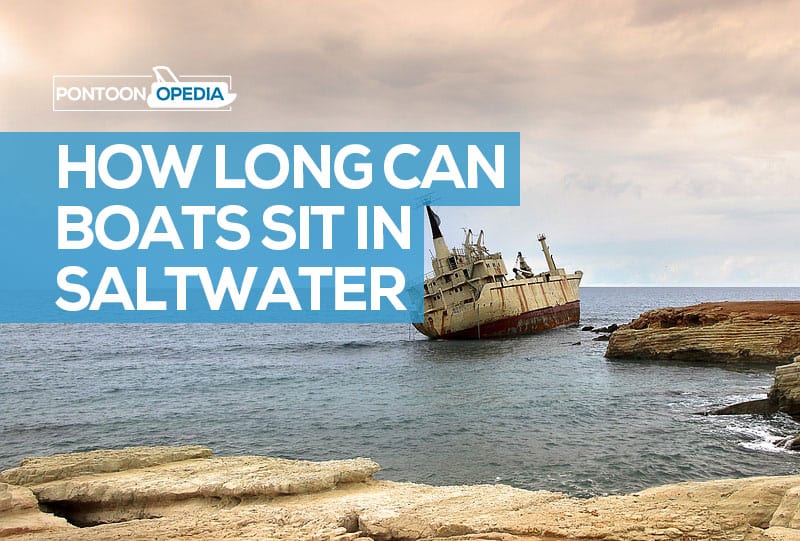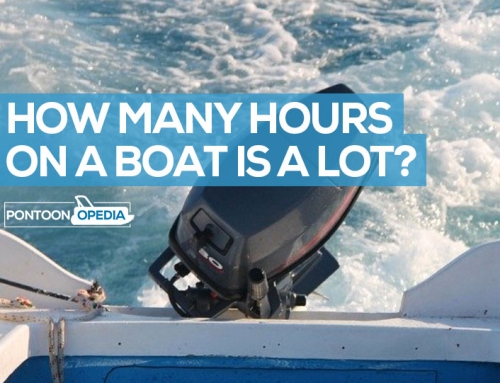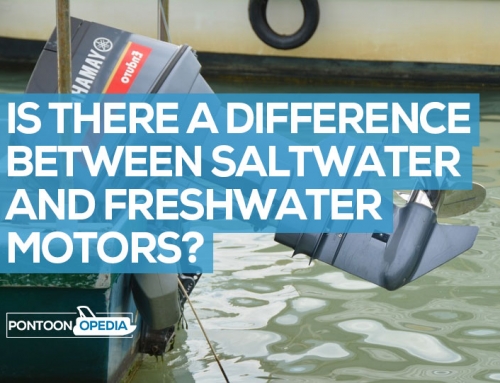Every boat owner wants to keep their boat in top condition, but always having to bring it in and out of the water for storage can be a hassle. Due to the hard work involved, it can be tempting to end up leaving a boat in saltwater in-between use an in the off-season. But if you do decide to let your boat sit in saltwater you should be aware of the risks to that plan.
How long can a boat sit in saltwater? On average, you can leave a boat to sit in saltwater without moving for 7 days. However, this can differ depending on the type of boat, the design of the hull, the treatment (for example, bottom paint) and the saltwater conditions.
It’s not actually that easy to pinpoint the exact length of time that you can safely leave your boat to sit in saltwater since there are so many factors involved. Some of these factors are related to the vessel itself, while others are about the environment it’s in.
Table of Contents
What to consider when leaving a boat in saltwater
Saltwater is corrosive to any material over time, even boats that are made to be used in the ocean. The level of damage to your watercraft can vary depending on the following factors:
- Boat construction material
- Water conditions
- Hull Paint
- Frequency of use
Boat construction material
Boats that are designed to be used in saltwater will typically be made of fiberglass or steel. A boat that works in saltwater can always be used in freshwater.
However, it won’t always work the other way around as a boat built for freshwater will not always be safe for use in saltwater because saltwater is so much more corrosive.
Water conditions
Warm water, currents, and high salinity conditions can all damage your boat faster when it’s stored in saltwater. Mussels and barnacles enjoy warmer conditions, and most algae growth speeds up as water temperatures rise, so warm, slow-moving, salty water provides the most hospitable environment for them, while the opposite can be said for your boat.
On the other hand, if the weather is getting cold, you want to make sure ice doesn’t damage your boat by bumping into it. If it’s stored in a marina, they may use machines that circulate the water and keep it from freezing.
If your boat is on a private dock, though, it will be up to you to monitor conditions and protect it from ice damage.
Hull paint for saltwater boats
Antifouling paint is vital for preventing marine growth on your boat’s hull. Aquatic plants and sea life like barnacles are not just unsightly, but they can damage boat components over time if they are not removed. They can also reduce your boat’s speed in the water.
Antifouling paint prevents anything from growing on your boat’s hull because it is toxic to marine plants and animals. It’s critical paint if you are leaving your boat in saltwater for an extended period of time.
For more information, this comprehensive article from The West Marine Advisor provides details on choosing the correct bottom paint for your boat.
Frequency of use
If you use your boat frequently and keep it moving, then it’s going to be less susceptible to marine growth and subsequent saltwater damage. This makes sense intuitively since any movement will make it more challenging for algae or mollusks to attach themselves firmly on the boat’s surface.
Some people who use their boats every few days can keep them docked in saltwater for an entire season with no negative results.
How long can a boat sit in freshwater vs. saltwater?
Compared with saltwater, freshwater is far less corrosive, and you can leave your boat sitting in a lake or river for a considerably longer time. Even so, the constant moisture can cause issues over time.
A boat can only safely stay in saltwater for about one week, but in most cases, three to four weeks in freshwater will not cause damage.
When you leave a boat sitting in water, it never gets a chance for the construction materials to dry out. At the very least, you’re likely to get condensation on the interior that can cause mildew on seats and other surfaces. You won’t be able to dry water that is trapped in the bilge, and that water will eventually cause condensation that gets into your engine and electrical components.
Freshwater, like seawater, is full of plants and animals looking for a hospitable place to colonize. Barnacles can’t live in freshwater, but there are plenty of mollusks that will attach to your boat, not to mention the algae and lake weeds that can cause headaches for a freshwater boater.
Letting your boat sit in freshwater for long periods without use is the most likely way to end up with a hull that needs a deep cleaning.
The final and biggest risk of allowing your boat to sit in freshwater for too long is that your water vessel may develop blisters. Blisters (also called osmosis) occur when water gets absorbed through the gel coat on your hull and permeates the interior laminate, causing the hull paint to bubble up.
Blisters can occur on a boat used in saltwater, but they’re more likely in freshwater. Blisters can be avoided by allowing your boat to dry thoroughly every few weeks.
Letting your boat to sit in saltwater or freshwater can influence resale value. Many people shopping for second-hand boats will pay more for a water vessel that has only been used in freshwater.
Using dry storage can increase the longevity of any watercraft, and it might be worth the investment in a lift or space in a dry storage facility. In any case, you can minimize depreciation in your saltwater boat by keeping it clean and well-maintained.
Cleaning a boat that been left in saltwater
Even if you accidentally left your boat in saltwater for longer than a week, it’s not a lost cause. As soon as possible, you’ll want to follow these cleaning and maintenance tips to assess the situation and prevent further damage:
- First, clean the entire boat by washing with soap and water. A pressure washer can speed up the job if you have one. You might notice that you’ve lost some of the shine your boat originally had as the salt creates small scratches in the paint. Even when it’s clean, be aware that your water vessel may look more worn than before because of the saltwater conditions. Keeping your boat clean after using it in saltwater is probably the most critical step to prevent damage.
- Pay special attention when cleaning the hull, making sure to remove any organisms that might have attached themselves. For stubborn barnacles or mussels, you may need a scraper. Check for any damage to the hull and repair it promptly. Repaint with a new coat of antifouling paint if required.
- Flush the engine with fresh water to remove as much saltwater as possible. Wash and lubricate any moving metal pieces to keep them from rusting. You may want to perform routine maintenance on your engine per the owner’s manual at this time or have a professional look it over.
- Check your sacrificial anodes and replace them if necessary. These metal tabs are found near your boat’s metal components in various parts of the vessel. Their purpose is to protect your boat’s metal components against galvanic corrosion. When the anodes have worn down to half their original size, it’s time to replace them.
- Maintain the boat’s electrical components and fuel system. Make sure everything is clean and invest in a fuel system treatment that’s made for marine environments.
- Use a vinyl cleaner to keep your seats and interior looking their best, and a glass cleaner on your windshield and other glass surfaces. Finally, a coat of marine wax on the exterior will protect against salt crystals, attaching themselves to the boat’s surface and causing further damage.
Conclusion
Rather than continuously moving your boat in and out of the water, many boating enthusiasts may prefer to leave it docked and in the water between uses. However, when left in the saltwater for too long, you risk severe damage to the vessel, ranging from marine growth to corroded hulls and engine parts.
As a rule of thumb, if consider how long a boat can sit in saltwater, I would try to limit it to one week without being active. When you finally do remove your water vessel, make sure you thoroughly rinse the saltwater off and perform regular maintenance where necessary. That way, you can ensure your boat will last for years to come.






